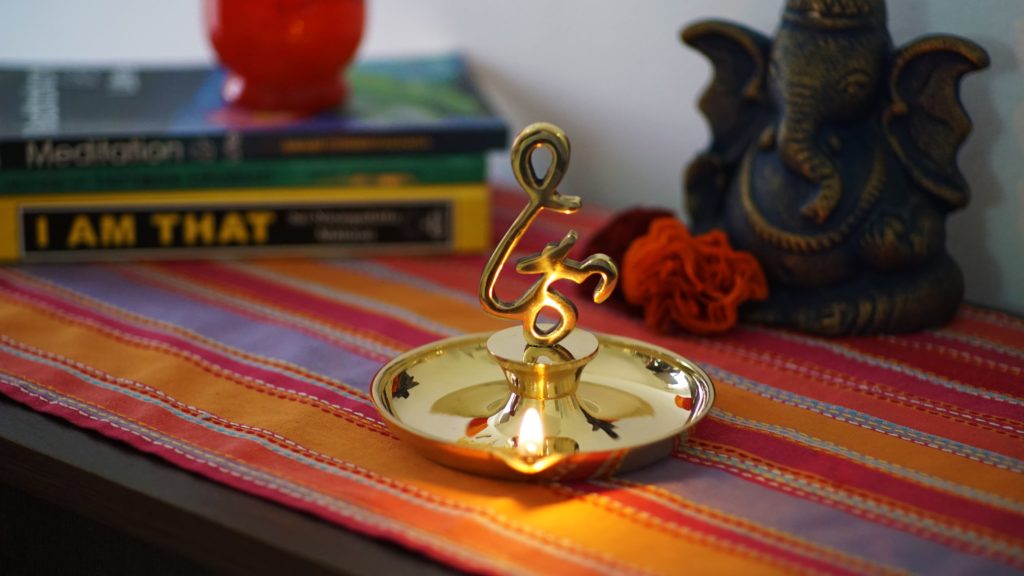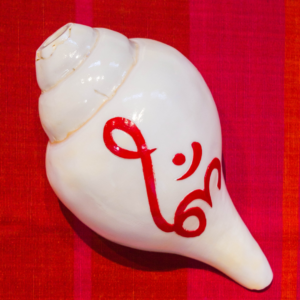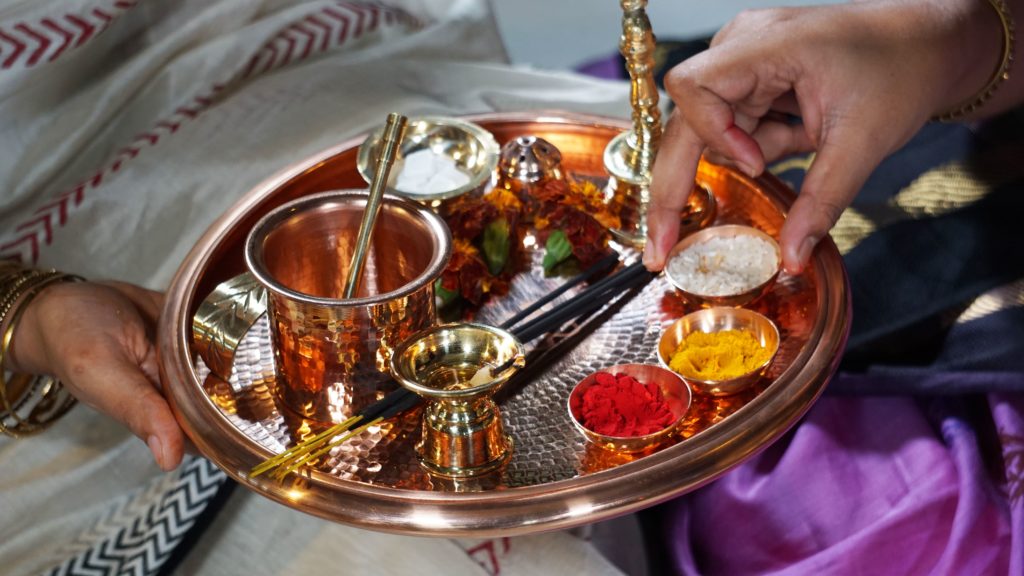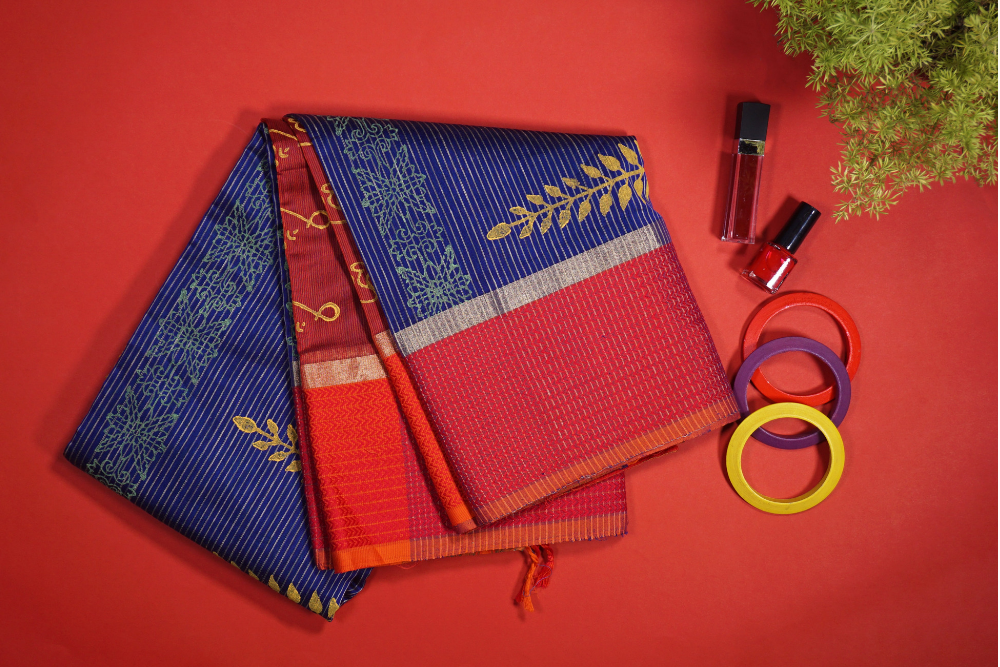The festival of Navratri (literally meaning nine nights) is one of the most widely celebrated Hindu festivals. It is celebrated to honour Goddess Durga who symbolizes power and purity. Goddess Durga is worshiped in her nine different forms during these days. The basic theme behind the nine-day long Navratri festival is the victory of Good over Evil.
Navratri is one such festival which is celebrated throughout India with great enthusiasm .The nine days celebration is full of colors, festive fervor, garbha, pooja, fasting, and lovely traditional clothes. Devotees wait and prepare for these most auspicious days with great eagerness, zeal and devotion. Each state and region of India celebrates Navratri in a different way…
Northern India
Navratri is celebrated with lot of devotion by fasting on all nine days. The nine forms of Goddess Durga are worshiped daily and Durga Shaptshati is read. The Chaitra Navratri concludes in Ram Navami, and the Sharad Navratri concludes in Dussehra. All temples are specially decorated with flowers and adorned with ornaments.
There are Ramlilas being staged in every locality, where the entire Ramayana is enacted by locals on a stage, infront of huge crowds.
The Kullu Dussehra in Himachal Pradesh is very famous and attracts a lot of tourists each year.
Western India
Particularly in Gujarat and Mumbai people celebrate Navratri with the famous Garba and Dandiya-Raas dance. They wear their traditional dresses and enjoy these community celebrations. People from different parts of India as well as abroad come to participate in the nine-day celebration.
In Maharashtra, “Ghatasthapana” is celebrated where ladies perform elaborate rituals and cultural traditions. Kaali, Lakshmi and Saraswati are worshiped by many families.
Southern India
People set up steps and place idols on them which is known as “Golu.” Elaborate Puja ceremonies are performed, and the Goddess is worshiped with all devotion and dedication. The idol of the main diety is decorated, and Vedic offerings are performed followed by Chandi Homa.
Ayudha Puja is also performed where people worship ‘instruments’ which are used in daily life such as utensils, kitchen tools, vehicles, books, and computers.
Goddess Durga blessings are invoked for success in coming years. People start new ventures and purchase new household items on these festive days of Navratri.
Eastern India
Navratri is celebrated as Durga Puja which is the biggest festival of the Bengalis. People observe fast and worship all the nine forms of Goddess Durga especially Kaali, Lakshmi, and Saraswati.
Puja Pandals are organized from the seventh day of the Navratri till the tenth day where big idols of Goddess Durga are placed and worshipped. People sing, dance and celebrate the festival with great joy, and enthusiasm.
Here are 9 Navratri Essentials, from around India:
1. Kalash
The festival of Navratri commences with ‘Ghatasthapana’ or ‘Kalash Sthapna’. Kalash also known as Ghat, is ‘a vessel made of copper, gold, silver or mud’. Sthapana means ‘to install’. Thus Ghatasthapana means ‘installing a pot’. But not an empty put. Water is poured into the pot with some grains of rice and a coin. The pot is generally covered with an inverted coconut, before which mango leaves are kept around the opening. Some would simply close the pot or vessel with a red cloth.
The Ghat once installed is worshipped as Goddess Durga. In the form of the Kalash, Goddess Durga is invited to our home. It is known as Avahana – request the Goddess to stay in Kalash for the duration of Navratri. The ideal place for Ghatasthapana is north-east corner of the house.
2. Diya
One diya or lamp is burned through out the nine days and care is taken that there is enough ghee or oil in the diya at all the times. The diya is kept at the altar, in such a place where it does not get much breeze. One can protect the diya with a open glass cylinder. This diya is called as akhand jyoti (burning all the time for nine days). This Akhand Jyoti will destroy all the negativity in the house. Thus Akhand Jyoti or Diya is an important ritual during Navratri. Big gold, silver or brass Diyas are ideal for Akhand Jyoti

3. Conch
The conch is blown to commence the festivities. Its sound is known to eliminate negativity from the surroundings and add positivity all around. Conch in the hands of Goddess Durga is a talisman of being pious, dedicated and devout. The conch also signifies prosperity. During Navratri Pooja, the conch should be placed on a clean red cloth or silver pots. The cosmic energy in conch gets emitted when it’s blown.

4. Khetri
On the first day of Navratri seeds of barley are sowed in the mud surrounding the Kalasha or in a seperate mud pot. Some people sow seeds of nine kind of cereals in the mud signifying nine forms of taste, rasa, and emotions, and when nurtured with faith and devotion, they sprout meaning life and energy. By the end of Navaratri, the plants from the seed would have grown upto 4 or 5 inches and are given as Prasad to the devotees and family members. On the tenth day, these sprouts are immersed in water.
5. Thali
During Navratri, Copper Thali is used to offer prayers and food to Goddess Durga. Copper is known to enhance the Sattva component, and hence, just like water, it is used for an allencompassing source. Copper awakens the Five vital energies – Panchprana. If the devotee breaks his fast from the food in the copper thali, the energies transfer the purity or sattvikta of food into the body within a short span.

6. Fasting
Fasting during Navratri has both spiritual and scientific significance. On a spiritual level, devotees believe that by fasting they teach oneself virtues like self-discipline and stoicism. In the form of a fast, they practice abstinence and move closer to Goddess Durga. While scientifically it is believed that fasting for nine days and consuming only satvik food helps the body detoxify and regulate the digestive system.
7. Garba
Garba is a dance form that worships the divinity and power of Goddess Durga. Traditionally the dance was performed around a vast Garba Deep, signifying life in the mother’s womb. The dance form also represents the circle of life, which moves from life-death-rebirth, leaving only Goddess Durga unmoved, unchanged and invincible.
8. Kanya Puja
Navratri ends with Kanya Puja in north India. It is believed that young girls are a form of Goddess Durga. Hence on the 8 or 9th Day of Navratri, small girls are worshipped. The girls are the most auspicious, jagrat and divine souls. Navratri is considered incomplete without Kanya Puja.
9. Saree
During Navratri, a saree and a blouse piece are offered to Goddess Durga. By offering a saree, the devotees pray to Goddess for their spiritual growth and seek blessings. This Panchopachara pooja is related to the attribute-less form of the goddess. By performing this ritual, the attribute-less form of the Goddess manifests. You can buy Kasavu and Maheshwari Saree online.

4 Comments Add yours